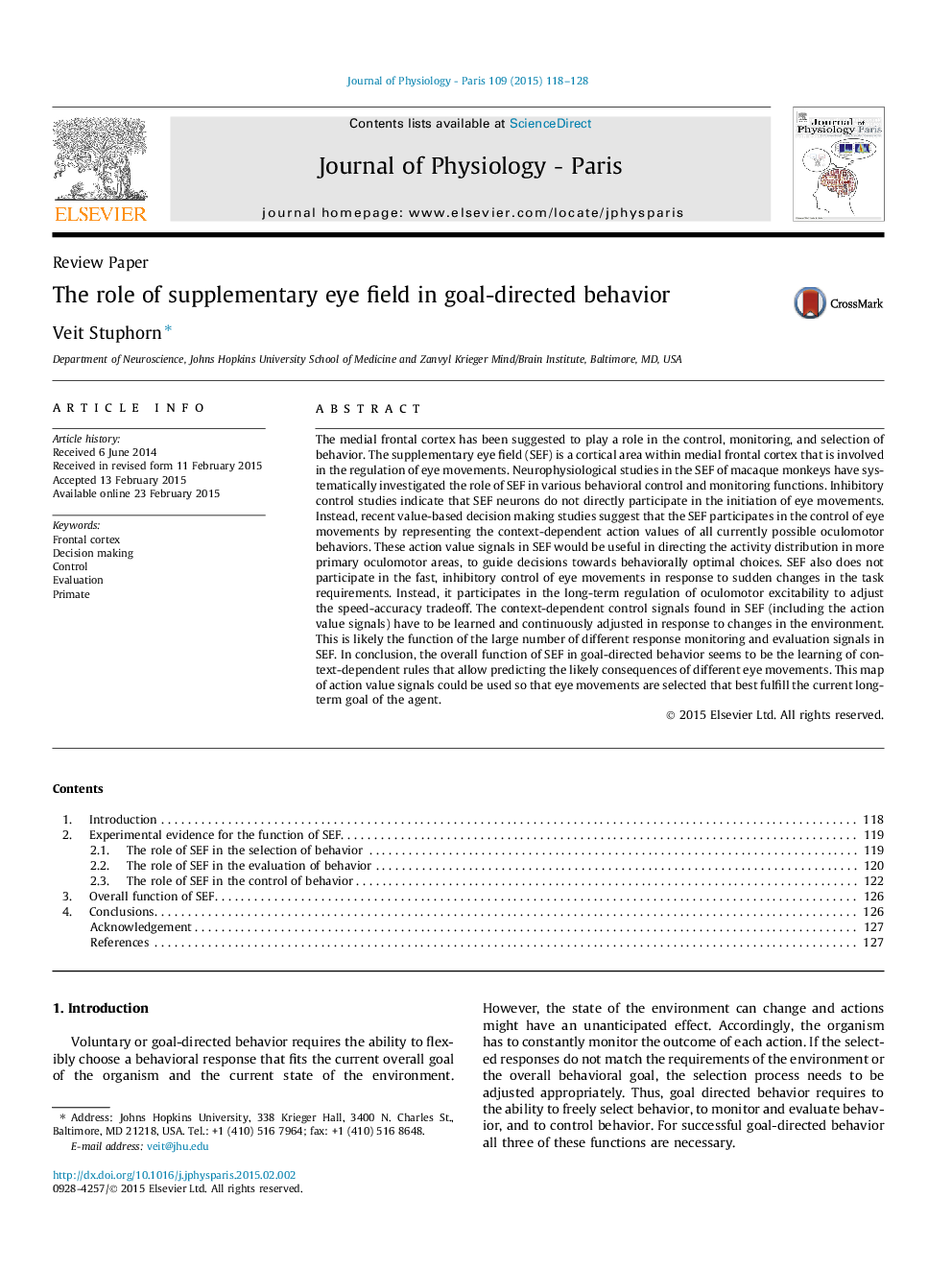| کد مقاله | کد نشریه | سال انتشار | مقاله انگلیسی | نسخه تمام متن |
|---|---|---|---|---|
| 5593300 | 1571022 | 2015 | 11 صفحه PDF | دانلود رایگان |
عنوان انگلیسی مقاله ISI
The role of supplementary eye field in goal-directed behavior
ترجمه فارسی عنوان
نقش میدان های مکمل چشم در رفتار هدفی هدف
دانلود مقاله + سفارش ترجمه
دانلود مقاله ISI انگلیسی
رایگان برای ایرانیان
کلمات کلیدی
قشر جلویی، تصمیم سازی، کنترل، ارزیابی، پرستار،
موضوعات مرتبط
علوم زیستی و بیوفناوری
بیوشیمی، ژنتیک و زیست شناسی مولکولی
فیزیولوژی
چکیده انگلیسی
The medial frontal cortex has been suggested to play a role in the control, monitoring, and selection of behavior. The supplementary eye field (SEF) is a cortical area within medial frontal cortex that is involved in the regulation of eye movements. Neurophysiological studies in the SEF of macaque monkeys have systematically investigated the role of SEF in various behavioral control and monitoring functions. Inhibitory control studies indicate that SEF neurons do not directly participate in the initiation of eye movements. Instead, recent value-based decision making studies suggest that the SEF participates in the control of eye movements by representing the context-dependent action values of all currently possible oculomotor behaviors. These action value signals in SEF would be useful in directing the activity distribution in more primary oculomotor areas, to guide decisions towards behaviorally optimal choices. SEF also does not participate in the fast, inhibitory control of eye movements in response to sudden changes in the task requirements. Instead, it participates in the long-term regulation of oculomotor excitability to adjust the speed-accuracy tradeoff. The context-dependent control signals found in SEF (including the action value signals) have to be learned and continuously adjusted in response to changes in the environment. This is likely the function of the large number of different response monitoring and evaluation signals in SEF. In conclusion, the overall function of SEF in goal-directed behavior seems to be the learning of context-dependent rules that allow predicting the likely consequences of different eye movements. This map of action value signals could be used so that eye movements are selected that best fulfill the current long-term goal of the agent.
ناشر
Database: Elsevier - ScienceDirect (ساینس دایرکت)
Journal: Journal of Physiology-Paris - Volume 109, Issues 1â3, FebruaryâJune 2015, Pages 118-128
Journal: Journal of Physiology-Paris - Volume 109, Issues 1â3, FebruaryâJune 2015, Pages 118-128
نویسندگان
Veit Stuphorn,
